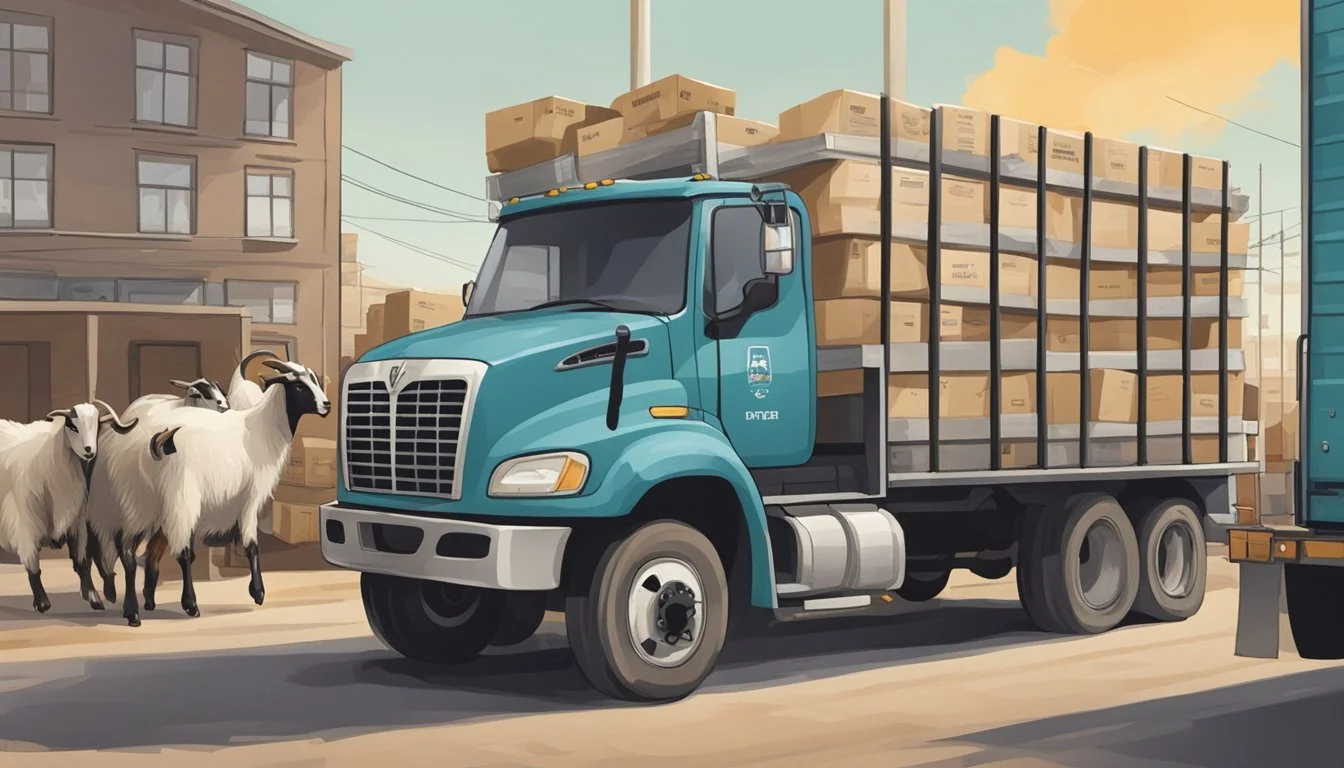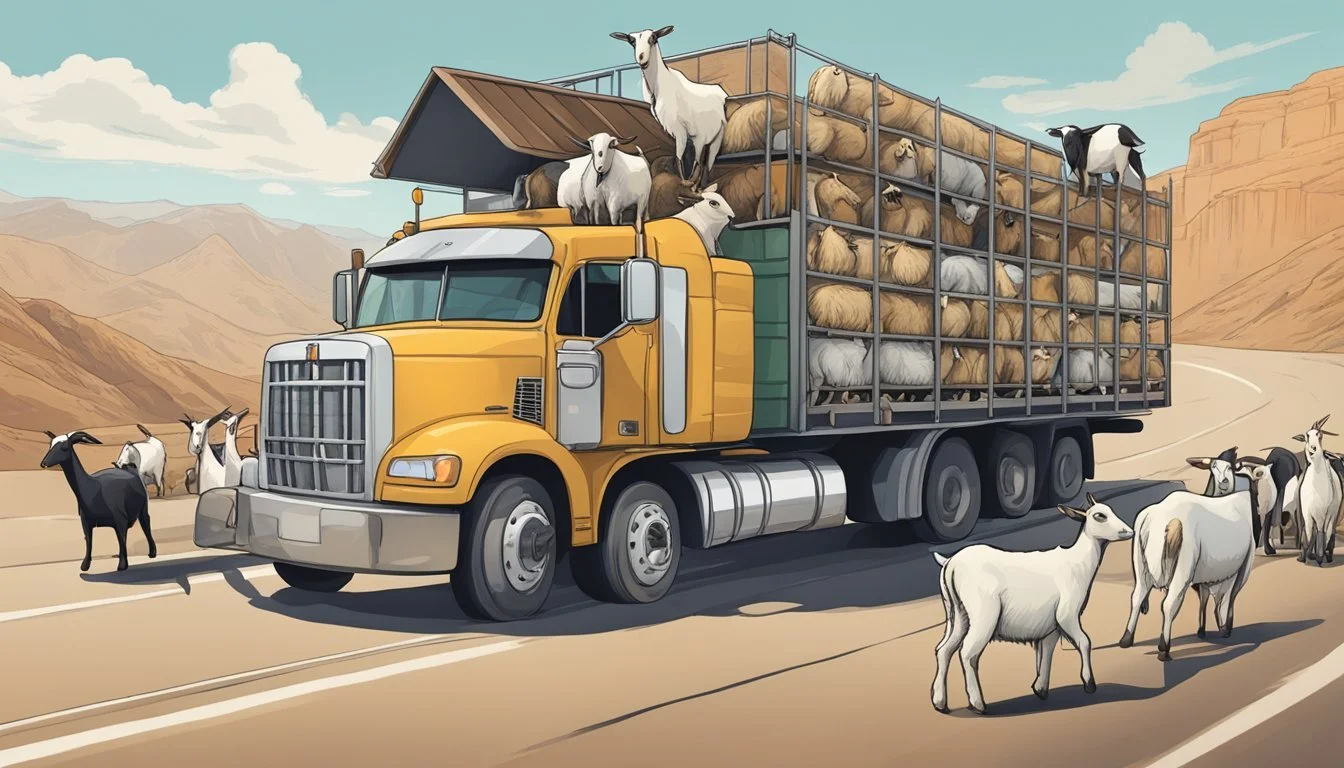What Are the Regulations for Transporting Goats Across State Lines
A Comprehensive Guide
Transporting goats across state lines in the United States is subject to a set of regulations that aim to manage the health and safety of the animals during transit and prevent the spread of disease. Each state has its own requirements, but there are also federal guidelines that transporters must comply with. Before undertaking the journey, it’s crucial to understand and adhere to these regulations to ensure a smooth and legal transportation process.
At the federal level, regulations concerning the interstate movement of livestock, including goats, often require a Certificate of Veterinary Inspection (CVI). This document certifies the animals are disease-free and is mandated by states for various classes of livestock. Additionally, for goats specifically, certain identification measures are enforced to track and control diseases such as scrapie. Transporters must ensure that goats heading across state lines are correctly identified with official tags or other approved means.
Understanding the specifics of these requirements, such as when a CVI is needed and what qualifies as proper identification, is necessary for anyone looking to move goats from one state to another. Whether the goats are being transported for breeding, sale, shows, or even slaughter, the adherence to state and federal livestock transport regulations is not only a legal obligation but also a step towards protecting the livestock industry and animal welfare.
Regulatory Compliance for Transportation
When transporting goats across state lines, compliance with specific regulatory requirements ensures the health and safety of the animals and the prevention of disease transmission.
Interstate Movement Regulations
The United States Department of Agriculture (USDA) determines the overarching regulations for the interstate movement of livestock, including goats. These regulations are enforced to prevent the spread of diseases and maintain animal health. Each state may have additional requirements; thus, it is crucial to check with the destination state’s agricultural department for precise instructions.
Health and Inspection Documents
A Certificate of Veterinary Inspection (CVI) is mandatory for the interstate movement of goats. This health certificate must be issued by an accredited veterinarian who certifies that the animals have been inspected and are free from contagious diseases. Some states may require additional health documentation or tests prior to entry or transit.
Identification Requirements
Goats must be identified with an official scrapie identification before interstate transport. Scrapie tags or other USDA-approved methods are used to trace animals in the event of a disease outbreak. It is essential to ensure that all transported goats have the appropriate scrapie identification to comply with federal and state regulations.
Transport Regulations by Animal Type
Transporting animals across state lines in the United States requires adherence to specific health and identification protocols to prevent disease spread and ensure animal welfare.
Goats and Sheep
Goats and sheep are subject to regulations designed to prevent the spread of scrapie, a fatal disease affecting the central nervous system. For interstate movement, they must have official scrapie identification before being transported. This includes all goats and sheep, whether for breeding, slaughter, or exhibition. Additionally, animals may require a Certificate of Veterinary Inspection (CVI) as specified by certain state regulations.
Dairy and Breeding Cattle
Female and male dairy cattle, along with other breeding cattle, must meet the testing requirements for diseases such as tuberculosis and brucellosis before interstate travel. States may impose specific entry requirements which often include health certificates and vaccination records. Dairy cattle transported for purposes other than immediate slaughter are typically subject to stricter regulations to maintain herd health status across states.
Equine and Other Livestock
Horses, including those used for rodeo and equine events, require a current negative Coggins test for Equine Infectious Anemia (EIA) before crossing state lines. Many states require a health certificate for horses that is valid for a limited period. Livestock such as bison (What wine goes well with bison?) may have individually mandated regulations, depending on the state. It is essential to consult the destination state's animal health department for the latest transportation guidelines before arranging travel.
Prevention and Control of Diseases
When transporting goats across state lines, it's paramount to mitigate the risk of disease transmission. The focus is on complying with regulations, ensuring animals are healthy, and proving it via proper certifications.
Scrapie Disease in Sheep and Goats
Scrapie is a serious, degenerative, and fatal disease that affects the central nervous system of sheep and goats. The National Scrapie Eradication Program was established to eliminate this condition, and it requires identification of animals to track and manage the disease. Sheep and goats being transported interstate must be accompanied by approved identification for scrapie, such as ear tags or tattoos, tying into the scrapie eradication efforts.
Other Infectious Diseases
Transporting goats between states demands vigilance for other infectious diseases as well, including brucellosis and tuberculosis. Regulatory measures are put in place to prevent these diseases from spreading. Adherence to sanitation norms and movement restrictions are necessary steps towards maintaining animal health and controlling potential outbreaks.
Veterinary Certifications
A health certificate, or Certificate of Veterinary Inspection (CVI), is indispensable for interstate travel of livestock. Accredited veterinarians examine goats for signs of infectious diseases and certify that they are fit for travel. These certificates must align with the regulations stipulated in Title 9 for livestock and are a testament to the livestock's health status. Some states have additional requirements, making it crucial for shippers to comply with the destination state's regulations as well as those of any states they will be traveling through.
Transport Best Practices
When transporting goats across state lines, adhering to best practices is crucial for ensuring their safety and complying with regulations. The following subsections provide guidance on loading and unloading, maintaining animal welfare through stress reduction, and managing travel duration and rest intervals.
Loading and Unloading
The loading and unloading process should be smooth and free from hazards to prevent injury. Use ramps with non-slip surfaces and ensure they are secure. For goats and sheep, ensure that the loading area is well-lit and free from loud noises that could startle the animals. Handlers must be trained and calm to facilitate a stress-free experience.
Stress Reduction and Animal Welfare
Transport stress can be minimized by providing adequate space for goats to stand and lie down without overcrowding. Ventilation is key to maintaining air quality and temperature control, particularly important for sheep and goats with thick coats. Familiarizing animals with the transport environment prior to travel can lessen anxiety.
Travel Duration and Rest
Limit travel time to the shortest duration necessary, with scheduled rest stops for longer journeys to provide food, water, and a chance to rest. Regulations often specify travel duration limits and required rest periods, which are essential to comply with for the welfare of the goats and sheep in transport.
Legal Considerations
When transporting goats across state lines, it is essential to be aware of legal requirements and adhere strictly to them. Compliance ensures the health and welfare of the animals, as well as adheres to interstate commerce regulations.
State Specific Regulations
Each state has its own set of regulations governing the transport of livestock. For example, Pennsylvania may have different requirements than neighboring states. It is imperative that transporters check with the state's agriculture department for up-to-date information before moving animals across state lines.
Penalties and Enforcement
Failure to comply with state regulations can lead to penalties, including fines or other legal repercussions. State and federal agencies are responsible for the enforcement of these rules, and their cooperation is crucial for the legal transport of goats.
Owner Responsibilities
The owner or hauler of the goats is responsible for understanding and following all regulations, which includes obtaining necessary documentation such as a Certificate of Veterinary Inspection (CVI). They must also ensure correct identification for scrapie tracking, which is a federally regulated program.
Documentation Retention
Documentation must be kept for the appropriate amount of time as required by the regulating bodies. This typically includes retaining copies of the CVI, any owner/hauler statements, and other relevant permits or certificates dictated by states or federal regulations. Compliance with these document retention policies is critical for audit and verification processes.
Resources and Additional Information
Navigating the regulations for transporting goats across state lines can be streamlined by consulting resources provided by reputable entities. Professional organizations, educational materials, and event-specific guidelines offer targeted information to support goat producers in compliance with transport rules.
Professional Organizations
Professional organizations such as the American Veterinary Medical Association (AVMA) serve as rich informational hubs for livestock transport regulations. They often provide up-to-date guidelines and best practices that are critical for anyone involved in the interstate movement of goats.
Educational Materials
Educational materials can be sourced from various platforms, including livestock extension educators who typically have pamphlets or PDF documents that carefully explain the necessary steps for transporting animals. For instance, specific requirements related to health certificates and identification for goats are topics often covered in these materials.
Event-Specific Guidelines
When goats are transported for shows, exhibitions, or recreational events, specific guidelines may apply. It's important to review the event's official resources to understand any additional regulations that might be in place. Organizers usually provide a content guide that delineates protocols for transporting goats to and from the event safely and legally.
Conclusion
When transporting goats across state lines, it is imperative to comply with the regulations set forth to ensure animal welfare and control the spread of diseases. These regulations are subject to change, and they can differ significantly from one state to another.
Firstly, it is essential to obtain a Certificate of Veterinary Inspection (CVI) as noted by the APIS guidelines. Exceptions may apply, however, for goats moving directly to slaughter or under certain state-specific provisions.
Identifying goats with scrapie tags before interstate movement is also a requirement in some states, as emphasized by Penn State Extension. These tags help track the animal's origin and protect the health of national herds.
Moreover, certain states mandate additional health papers, which may not be necessary when transporting goats directly intended for slaughter, as the American Goat Federation illustrates.
Before moving goats across state lines, check the specific requirements for each state to avoid legal and health complications. It is the transporter's responsibility to ensure all paperwork is in order and that animal welfare is prioritized during transport.
In summary, the regulations safeguard goat) health and prevent disease transmission. Careful planning and adherence to state-specific regulations can facilitate a smooth and lawful transport of goats across state lines.







